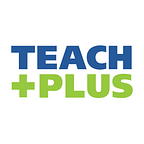Michigan Must Invest in Equitable School Funding
By Frances Lazette
This fall, my social media timeline was filled with Clear the List campaigns, where teachers made school supply lists on Amazon and donors could purchase what they requested. Thanks to the kindness of friends and strangers, my son’s teacher was able to get chair covers to hold student materials, stools for her round table, rugs for the reading corner, pencils, markers, crayons, bulletin board displays, scissors, dry erase markers and books for her classroom library. But what if she didn’t need to create a list? What if instead of relying on teachers to finance their classroom supplies, all schools had enough funding to provide students with the materials they need for their education?
The Clear the List phenomenon highlights one consequence of inequitable school funding: Many schools lack access to basic classroom supplies. Unfortunately, the problems are often much greater than that. Decades of inequitable funding have created a system of haves and have nots in Michigan public schools. Schools in affluent zip codes have the money for adequate staffing, classroom supplies, field trips, and building maintenance, whereas schools in lower-income areas don’t have anywhere near the same level of resources and support.
Michigan has an opportunity now to address this problem by investing in an equitable school funding model. Both the House and Senate Education Appropriations Committee proposed to increase funding for ELL, low-income and special education students, all of whom have been underserved. I urge the Governor and other legislators to support these investments.
The first thing the legislature should do is increase the amount of supplemental funding provided for high-need students. Currently, Michigan gives additional funding for at-risk, special education and ELL students; however these rates are significantly below what current research recommends. I have seen the impact of underfunding these services both as a teacher and a parent. My children attend a Title I school in an otherwise affluent district. Even though the school has a variety of supports and intervention services, it still struggles to address the growing needs of its students. Teachers purchase classroom materials, supplies, and snacks with their own money. Special education staff, ELL teachers and literacy intervention specialists are present but they are stretched thin. If the state increased funding to support higher needs students, my children’s school could hire more support staff to provide additional ELL teachers for students that do not speak English, or have tutors for general education students that are behind grade level in reading and math, or even have counselors to offer SEL support and instruction.
The second thing the legislature should prioritize is acknowledging the impact of concentrated poverty on a district. The Senate’s proposal takes an important step toward doing so by targeting more dollars for students who are from low-income families and attend schools in districts with high poverty rates. If adopted, this index would be the first time Michigan allocated weighted funding according to concentration of poverty.
As a teacher, I have worked exclusively in Title I schools; however I have been in districts with concentrated poverty and without, and the differences are disheartening. My first district served students that lived in an area with concentrated poverty, meaning that more than 40% of the neighborhood lived below the poverty line. In the time before Clear the List existed, I would spend every fall browsing back-to-school sales to stock up on notebooks, pencils, and craft supplies. This was because my school was unable to provide any of the basic materials I needed in my classroom. Not having adequate supplies was only the beginning of the problem though. Throughout my 14 years in the classroom, I have taught in buildings with 35-plus middle schoolers in a class without textbooks, in a building with only one elective course for middle schoolers, with one counselor for 900 students, and with two special education teachers for an entire school. The list goes on.
As the Michigan Legislature considers how to fund our public schools, we need to be very intentional in the way we distribute our resources. My hope is that one day Clear the List campaigns will become a thing of the past because classrooms will be fully funded. Every student deserves access to a high-quality education, regardless of where they are from or what additional supports they require. We are at a pivotal moment in public education, and we have the opportunity to create long-lasting changes that will benefit all students, but particularly the most underserved.
Frances Lazette is a French and individuals & societies teacher at Scarlett Middle School in Ann Arbor, Michigan. She is a member of the Michigan Teacher Leadership Collaborative, a program co-convened by The Education Trust-Midwest and Teach Plus.
